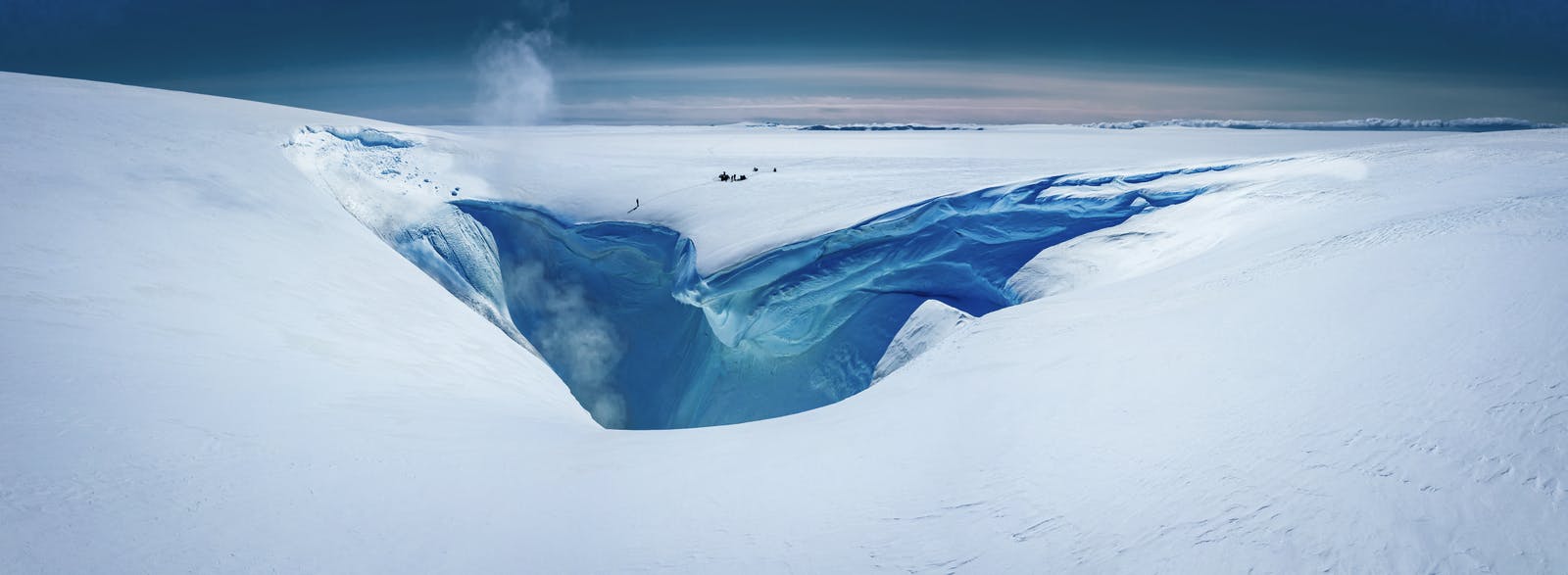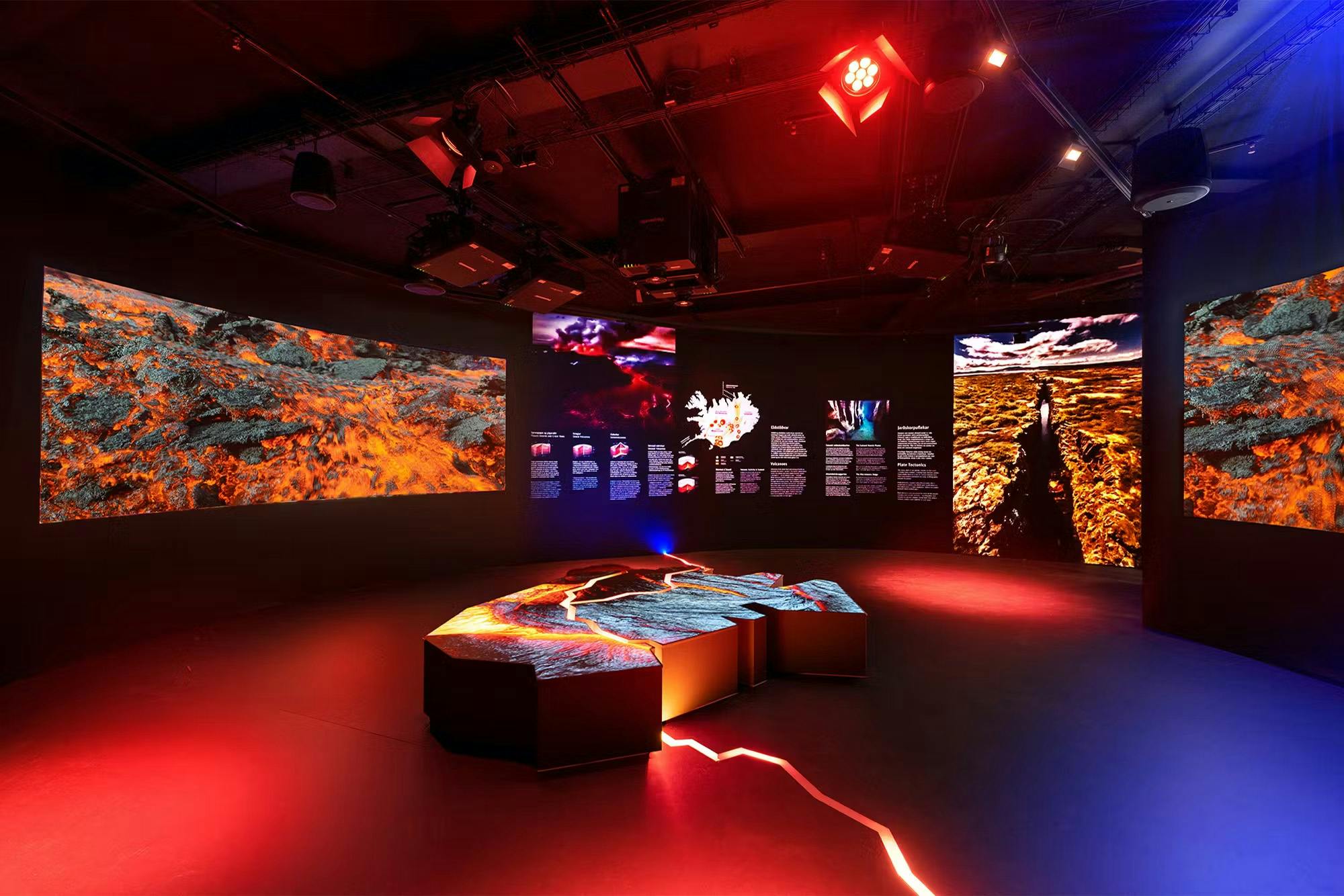
Eruptions of Bárðarbunga Volcano
Bárðarbunga is a subglacial stratovolcano in the remote and uninhabited highlands in the centre of Iceland that last erupted in 2014-2015 and has a long eruption history. Bárðarbunga is one of Iceland’s largest and most active volcanoes. At an elevation of 2,009 metres above sea level, the volcano is known for its massive subglacial caldera, which measures approximately 70 square kilometres.
Bárðarbunga Eruption History

Below is a timeline of Bárdarbunga eruptions, from oldest to most recent.
- Around 870: The Vatnaöldur fissure eruption from the Bárðarbunga volcanic system is believed to have taken place around this time, coinciding with the settlement of Iceland.
- 1477: This was the largest known eruption in Iceland, with a Volcanic Explosivity Index of 6. The eruption resulted in a volcanic ash layer that drifted as far as Greenland.
- 1701-1780: This period saw multiple eruptions from Bárðarbunga.
- 1797: An eruption occurred at Veidivötn, a fissure system associated with Bárðarbunga.
- 1862-1864: Eruptions occurred at the Þjórsá Lava and Veidivötn fissure systems associated with Bárðarbunga.
- 1910: An eruption took place at the Þjórsá Lava fissure system, marking the last major eruption at Bárðarbunga for more than a century.
- 2014-2015: The most recent eruption as of 2023. This event lasted six months, resulting in the largest volume of lava erupting in Iceland since the Laki eruption in 1783-1784. The eruption emitted enormous volumes of sulphur dioxide and impacted air quality in Iceland; however, there was no effect on flights outside the immediate vicinity as the eruption hadn’t produced a significant amount of volcanic ash.
Is Bárðarbunga Active?

Bárðarbunga is considered an active volcano, with its last eruption in 2014-2015. There are no indications that an eruption is imminent, but volcanoes are monitored closely in Iceland. If an eruption is possible, warnings and alerts will be implemented.
Where Can I Learn About Volcanoes in Reykjavík?

Perlan’s Forces of Nature exhibition allows guests to marvel at the power of volcanoes, earthquakes, and geothermal energy that powers the island. Guests will learn that volcanoes form when heat and pressure build beneath the earth’s surface. The earth’s weak points tend to be along fault lines where tectonic plates converge or diverge, as in Iceland’s case.
Perlan’s exhibition shows that volcanic activity in Iceland is so diverse that researchers typically speak of “volcanic systems” rather than individual volcanoes. The island has 30 active volcanic systems, each with many types of volcanoes. This is an ideal museum to visit if you don’t have the time to visit a volcano up close and personal.
Bárðarbunga Eruption FAQ

What would happen if Bárðarbunga erupted?
Volcanoes are monitored closely by the Icelandic Met Office, and if there are indications of an eruption, warnings and alerts will be issued. That could include closed roads, cancelled tours, and cleared air space. There is no need to feel concerned when visiting Iceland, as eruptions are a part of life on the island, and measures are in place to keep people safe.
Is it safe to visit a volcano in Iceland?
There are numerous tours of volcanoes and glaciers in Iceland, and they are very safe. Trained guides lead groups in Iceland on hiking, ice climbing and ice cave tours that are safe and fun. However, please note that you should never walk on a glacier without a trained guide, as crevasses and sinkholes exist. Guides are trained on the conditions and know how to keep guests safe and happy. Always respect Icelandic nature and the unique geology of the island. If you are going to explore on your own, make sure to visit www.safetravel.is to check the weather and road conditions.
Popular articles

Reykjanes Volcanoes Overview
Enjoy a complete overview of the Reykjanes Volcanoes from 2021-2024. Learn about its geology, recent activity, and visitor tips for a safe, memorable experience.

Reykjanes Peninsula Volcanoes: Sundhnúksgígar Eruptions
The anticipated volcano has erupted in the Reykjanes Peninsula, the site is being called Sundhnúkagígar. See the historic insights on the seismic activity and volcanic eruptions.

Earthquakes in Iceland
Earthquakes in Iceland are a fact of life. Each year, hundreds of small tremors shake the earth, a reminder of the country’s position on a tectonic plate boundary.

Volcano Museums and Exhibitions in Iceland
If you don't manage to visit an actively erupting volcano in Iceland - Experience its force at one of these excellent volcano museums and exhibitions in Iceland.

Top 10 Places To See the Northern Lights in Iceland
You can see the northern lights across the country, but some spots are more suitable than others. Find the best place to see the northern lights in Iceland.

Ice Caves From Reykjavik
Travel beyond the capital for a closer look at an ice cave under one of Iceland’s glaciers. If you can’t spare the time, experience Perlan’s ice cave in Reykjavik.